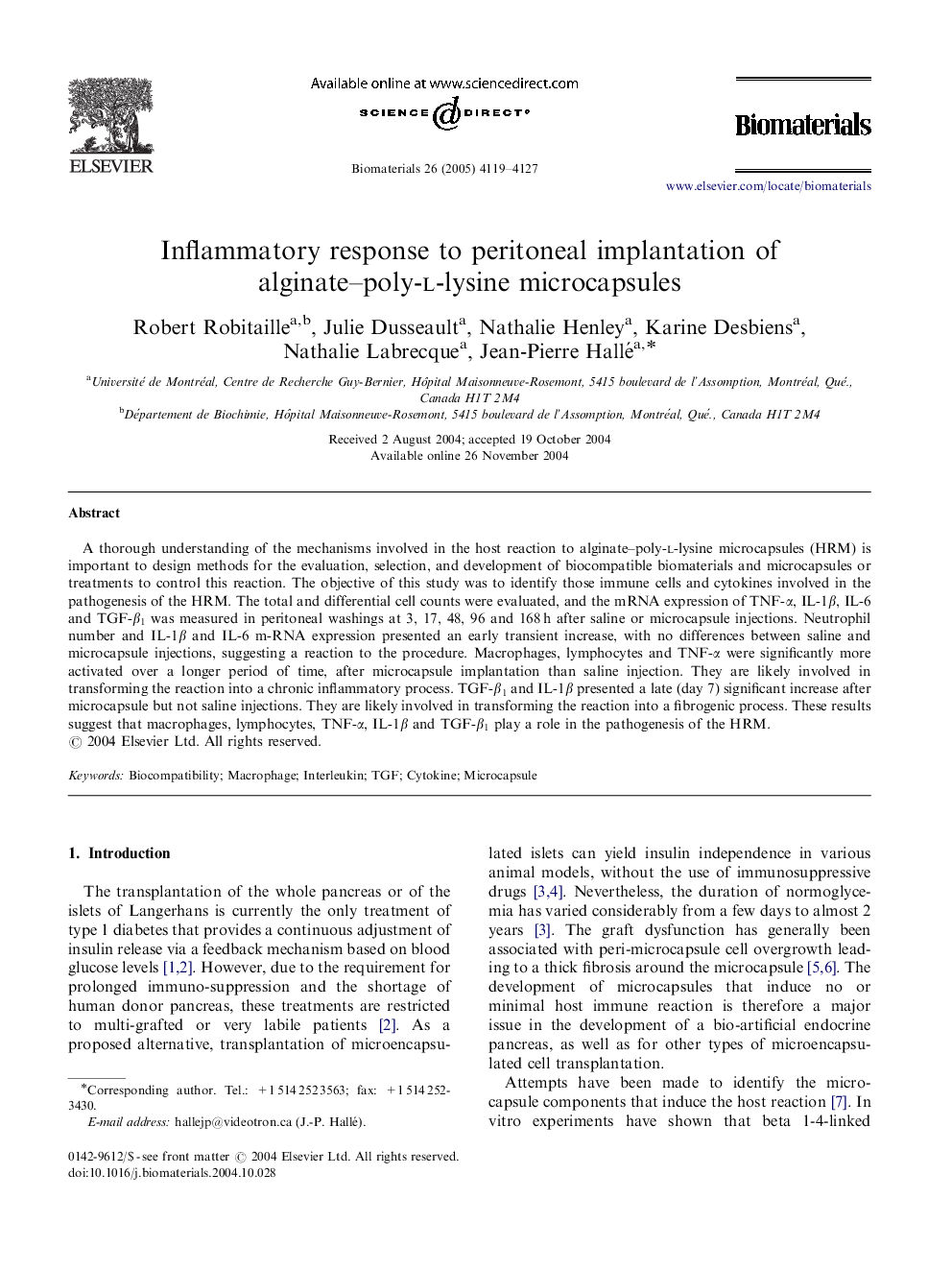| Article ID | Journal | Published Year | Pages | File Type |
|---|---|---|---|---|
| 12690 | Biomaterials | 2005 | 9 Pages |
A thorough understanding of the mechanisms involved in the host reaction to alginate–poly-l-lysine microcapsules (HRM) is important to design methods for the evaluation, selection, and development of biocompatible biomaterials and microcapsules or treatments to control this reaction. The objective of this study was to identify those immune cells and cytokines involved in the pathogenesis of the HRM. The total and differential cell counts were evaluated, and the mRNA expression of TNF-α, IL-1β, IL-6 and TGF-β1 was measured in peritoneal washings at 3, 17, 48, 96 and 168 h after saline or microcapsule injections. Neutrophil number and IL-1β and IL-6 m-RNA expression presented an early transient increase, with no differences between saline and microcapsule injections, suggesting a reaction to the procedure. Macrophages, lymphocytes and TNF-α were significantly more activated over a longer period of time, after microcapsule implantation than saline injection. They are likely involved in transforming the reaction into a chronic inflammatory process. TGF-β1 and IL-1β presented a late (day 7) significant increase after microcapsule but not saline injections. They are likely involved in transforming the reaction into a fibrogenic process. These results suggest that macrophages, lymphocytes, TNF-α, IL-1β and TGF-β1 play a role in the pathogenesis of the HRM.
